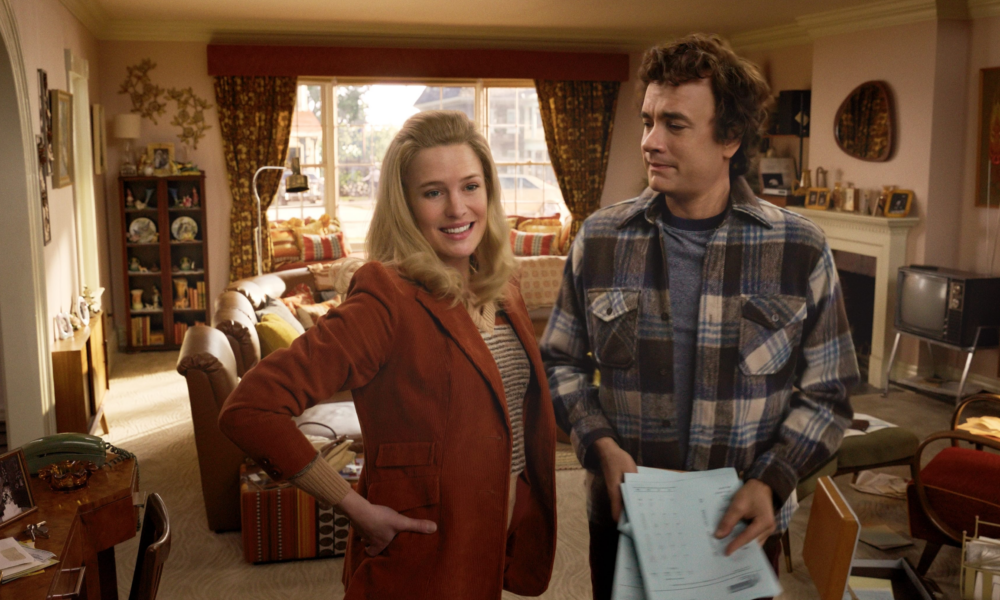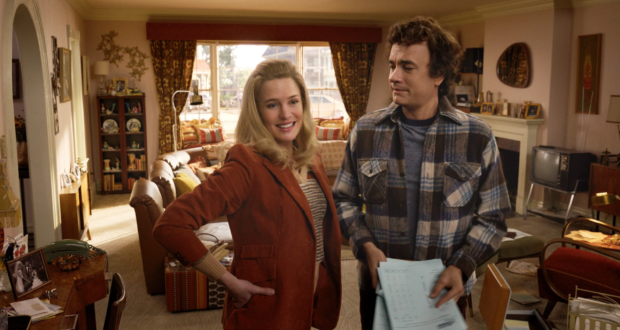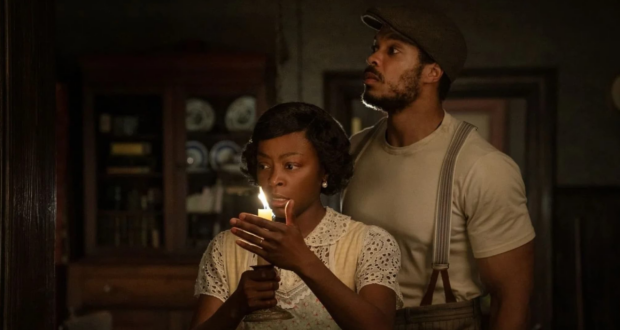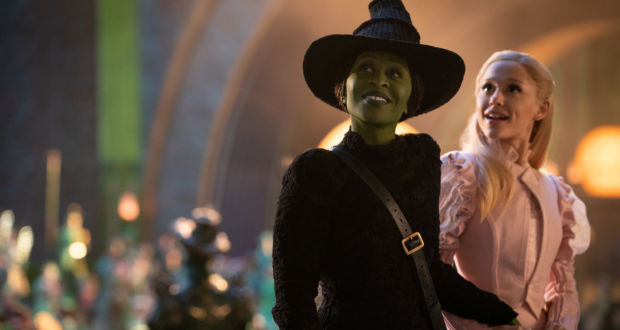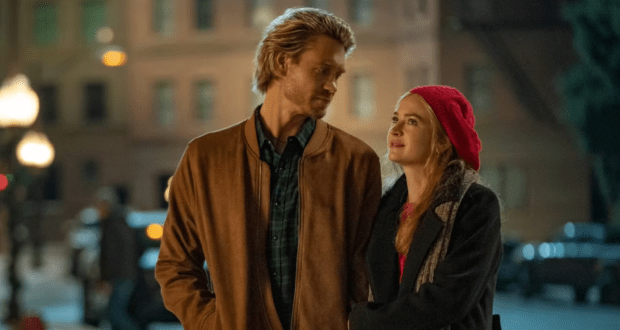Robert Zemeckis‘ Here, based on Richard McGuire‘s acclaimed graphic novel, sets out to explore the passage of time and the impermanence of human life through an audacious narrative structure. With a nonlinear storytelling approach and cutting-edge visual effects, including extensive use of digital de-aging technology, the film ambitiously spans millennia to chronicle events tied to a single piece of land. Starring a stellar cast, including Tom Hanks, Robin Wright, Paul Bettany, and Kelly Reilly, Here should, on paper, be a profound meditation on human connection and history. However, while the film is visually striking and conceptually bold, its lack of emotional resonance and inconsistent execution prevent it from achieving its lofty goals.
A Dizzying Narrative Experiment:
The defining characteristic of Here is its nontraditional narrative structure. Like the graphic novel, the film interweaves moments from different time periods, often presented simultaneously through split screens. This technique attempts to evoke a sense of continuity and universality, illustrating how moments—mundane or monumental—are forever layered atop one another in the same physical space.
While this concept is compelling, its cinematic execution feels uneven. The frequent time jumps, often with minimal context, make it difficult for the audience to fully invest in any particular storyline or character. The simultaneous depiction of events from vastly different eras—dinosaurs wandering the land juxtaposed with a 1940s dinner party, for instance—initially intrigues but eventually overwhelms. Instead of fostering a sense of wonder, the constant fragmentation undermines emotional engagement.
An Overreliance on Visuals:
Zemeckis is known for pushing the boundaries of visual effects, and Here is no exception. The digital de-aging technology used on much of the cast is undeniably impressive, showcasing a level of realism that surpasses many previous attempts in other films. The meticulous recreation of historical settings, from the Ice Age to the COVID-19 pandemic, is another visual triumph, immersing viewers in the details of each era.
However, the film leans so heavily on its visual storytelling that it neglects the emotional core necessary to ground its sprawling narrative. The split-screen format and time-hopping sequences are visually dynamic but often feel more like a technical showcase than an integral storytelling device. The human stories, which should be the heart of the film, are overshadowed by the relentless parade of visual effects and historical reenactments.
Strong Performances, Lost in the Shuffle:
The cast of Here delivers commendable performances, despite the film’s structural challenges. Tom Hanks and Robin Wright, as Richard and Margaret Young, anchor the narrative with their portrayals of a couple navigating love, loss, and memory over decades. Hanks, in particular, imbues Richard with a quiet poignancy, especially in his later years, as he grapples with the passage of time and the fading of his wife’s memories. Wright brings a layered vulnerability to Margaret, though her character feels underdeveloped due to the fragmented storytelling.
Paul Bettany and Kelly Reilly, as Al and Rose Young, also shine in their respective roles, capturing the nuances of mid-century family dynamics. Michelle Dockery‘s portrayal of Pauline Harter, a woman who lives in the house during the early 20th century, is compelling but too brief to leave a lasting impact. Despite their efforts, the characters often feel more like symbolic placeholders than fully realized individuals, a consequence of the film’s episodic structure.
Themes That Struggle to Resonate:
Here tackles ambitious themes, from the cyclical nature of life to the transience of human existence. The film’s exploration of memory, legacy, and the connections we share with those who came before us is undoubtedly thought-provoking. Yet, the execution lacks the emotional weight necessary to make these themes resonate deeply. The rapid shifts between time periods prevent the audience from forming meaningful connections with the characters or their stories, diluting the film’s intended impact.
For instance, moments of profound loss—such as the death of a character during the Spanish flu or a family’s struggle during the COVID-19 pandemic—are presented with a cold detachment that undermines their emotional potential. Similarly, the glimpses of prehistoric life and Indigenous history, while visually impressive, feel tokenistic, lacking the depth and nuance needed to honor these narratives.
Pacing and Emotional Distance:
The film’s pacing is another major drawback. While the nonlinear structure is meant to reflect the fluidity of time, it often feels more like a series of disjointed vignettes than a cohesive narrative. Some storylines, like the romance between Richard and Margaret or the bohemian escapades of Leo and Stella Beekman, are compelling in isolation but are not given enough time to develop fully. Others, like the prehistoric sequences, feel like mere visual asides, disconnected from the broader narrative.
The result is a film that feels both overstuffed and emotionally distant. By attempting to cover such an expansive timeline, Here sacrifices the intimacy and specificity that could have made its stories truly resonate. The audience is left as passive observers to a montage of human history, rather than active participants in an emotional journey.
Overall:
Here is an undeniably ambitious project, showcasing Robert Zemeckis’ willingness to experiment with narrative structure and visual storytelling. The film’s technical achievements, from its seamless digital de-aging to its intricate historical recreations, are commendable and often mesmerizing. However, these strengths cannot compensate for the film’s emotional shortcomings and narrative fragmentation.
Despite a talented cast and a thought-provoking premise, Here fails to connect on a deeper level, leaving viewers impressed by its visuals but unmoved by its stories. While some may appreciate the film’s conceptual audacity, others will find it to be a hollow and overly cerebral experience. For all its ambition, Here ultimately falls short of delivering the profound meditation on time and humanity that it aspires to be.
-
Acting - 6/10
6/10
-
Cinematography/Visual Effects - 5/10
5/10
-
Plot/Screenplay - 4/10
4/10
-
Setting/Theme - 3/10
3/10
-
Watchability - 4/10
4/10
-
Rewatchability - 1/10
1/10
